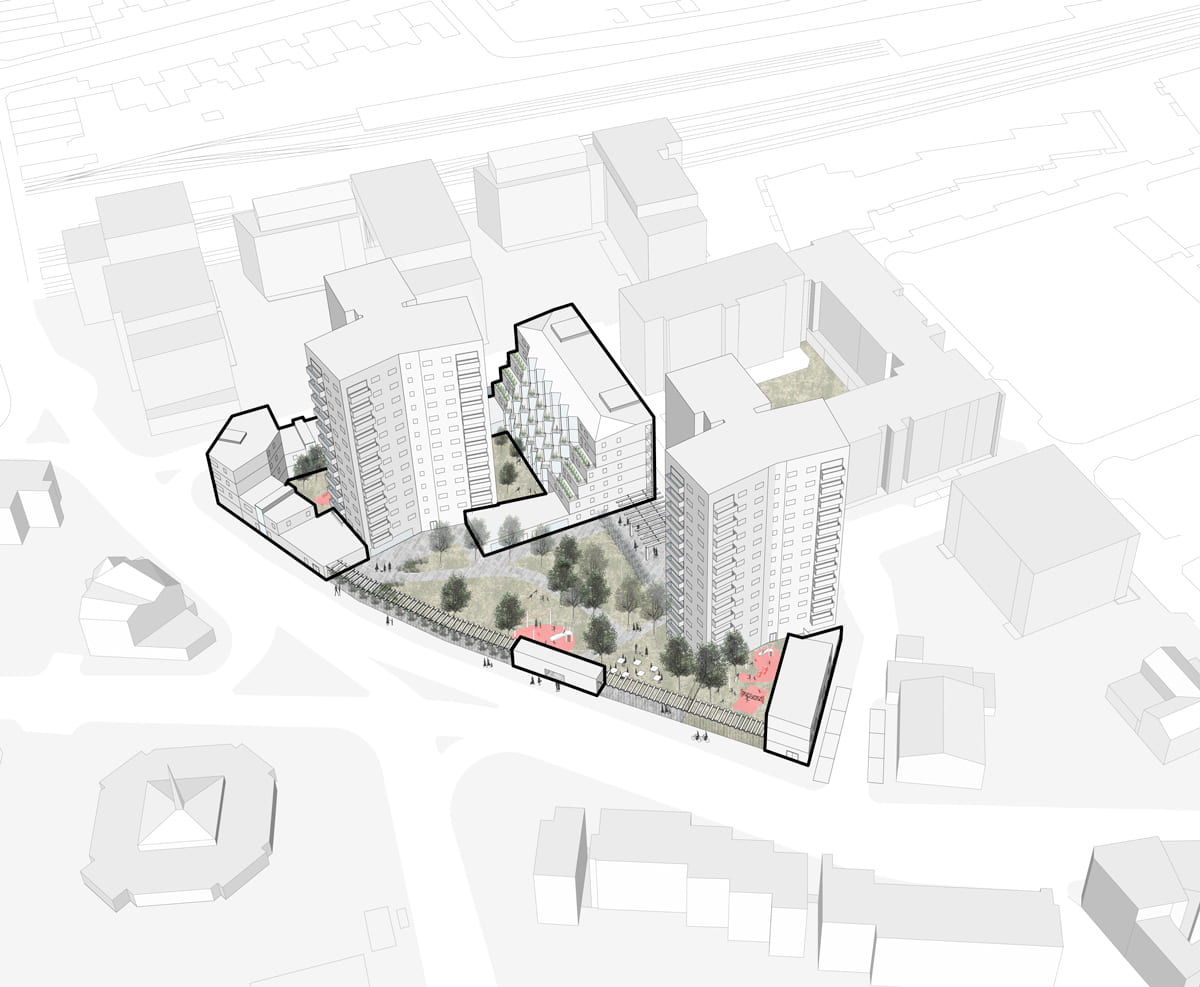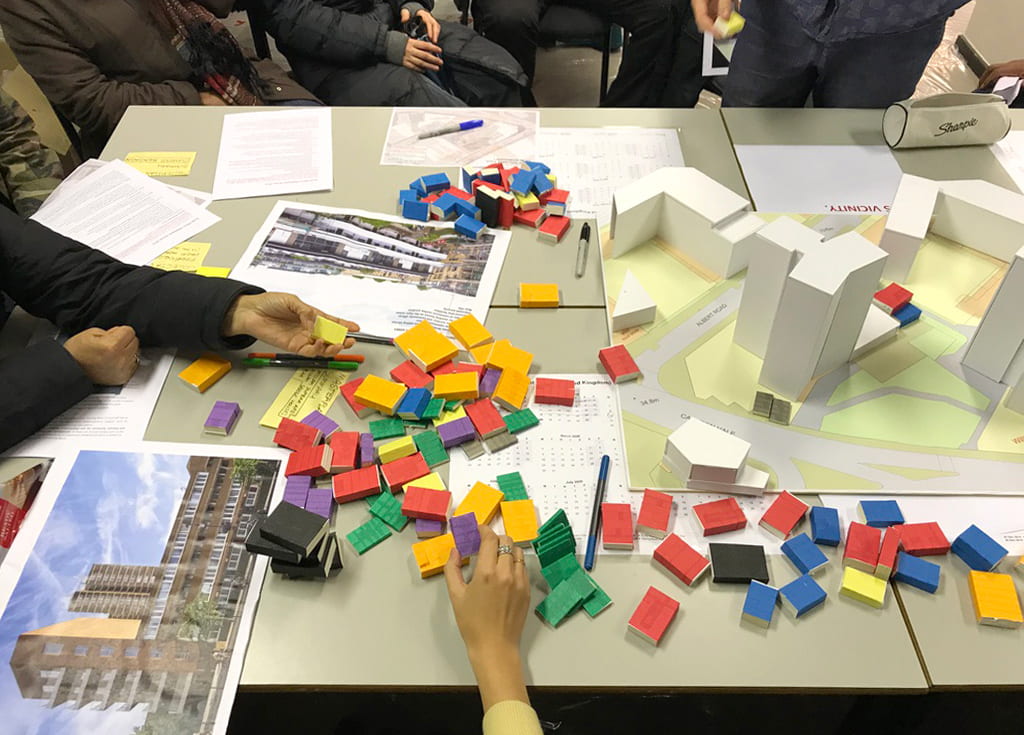Civic Design Exchange
Community Plan of William Dunbar and William Saville Houses, South Kilburn
Title of the project: Civic Design Exchange: Co-designing neighbourhoods with communities
Principal Investigator and project coordinator: Dr Pablo Sendra
Team: Cecilia Colombo, Alice Devenyns, Irene Manzini Ceinar
Quantity Surveyor: Simon Morrow, SJ Morrow Ltd
In collaboration with: Residents Association
In partnership with: Granville Community Kitchen. Leslie Barson
Funded by: Research England’s Higher Education Innovation Fund, managed by UCL Innovation & Enterprise
Between October 2019 and May 2020, the UCL Civic Exchange team carried out the knowledge exchange project ‘Civic Design Exchange: Co-designing Neighbourhoods with Communities’. This project was carried out in partnership with Granville Community Kitchen, which acted as a link between UCL researchers and the residents from William Dunbar and William Saville Houses in South Kilburn Estate.
The estate is going through a major a regeneration scheme that involves a phased demolition and redevelopment of the whole estate. In the first masterplan that came out in 2005, these two blocks were planned to be refurbished, not demolished. In 2016, a new Masterplan Review was published, which included the demolition and redevelopment of these two blocks. When residents found out that their homes will be demolished at the end of 2016, this came as a great shock to some of the residents. The Masterplan Review 2016 proposes to demolish the two buildings, as well as other constructions on the site, and to build a new development with 213 new homes – 176 (83%) market and 37 (17%) affordable – and commercial units on the ground floor.
Aims of the Knowledge Exchange Project
- Through the workshops and other research methods, co-produce with residents an assessment of the impact the demolition and redevelopment of the buildings will have on the current residents.
- Through community engagement activities and workshops, as well as a survey, understand which are the main priorities for William Dunbar and William Saville houses’ residents in the regeneration of the estate, and co-produce with them a community vision for the future of their neighbourhood. In this document, we refer to this vision as the Community Plan.
- Study and assess to what extent the Community Plan meets the objectives outlined in the Masterplan Review.
- Study and assess the feasibility of the Community Plan.
- Exchange knowledge between communities and universities. This knowledge exchange happens in two directions:
- Communities learning about planning: through the workshops, residents increase their knowledge and awareness of planning, and reflect on their relationship with the neighbourhood.
-
- University researchers learning from communities: Communities possess a very important local knowledge. Through the workshops, the researchers learn about the experience of living in the neighbourhood and about which are the best tools to engage with communities.
Aim of the Community Plan
The aim of this document is to provide a community vision. The document provides a proposal for refurbishment of the existing 147 homes, infill densification with 47 additional homes, which makes a total of 194 homes, nine new community spaces with 366 m2 of floor space, 6 new retail units with 250 m2 of floor space, and a total of 24 car park spaces for residents. The proposed scheme follows the general principles of the 2016 Masterplan Review, except demolishing the buildings.
What Does the Community Plan Propose?
- No demolition;
- Refurbishment of existing 147 homes and building 47 new homes;
- 14 out of the 47 new homes are social-rent homes (council tenancy);
- 19 out of the 47 new homes are family-size homes, 13 of which are social-rent homes that can rehouse overcrowded families;
- Council tenants keep their homes and their council tenancy;
- Temporary tenants could become council tenants and stay in their homes;
- The plan delivers over 100 social housing more than the council’s proposal;
- 366 m2 of community facilities, including a nursery, indoor and outdoor gyms, a computer room, cafes and makerspaces, and improvement of the gardens;
- 6 new retail units for local shops;
- 24 car-park spaces
Related Posts

Right to Transfer
Some text description about this related link. Some text description here. Some text description about this related link.

Tools for Campaigning
Some text description about this related link. Some text description here. Some text description about this related link.

Right to Transfer
Some text description about this related link. Some text description here. Some text description about this related link.


